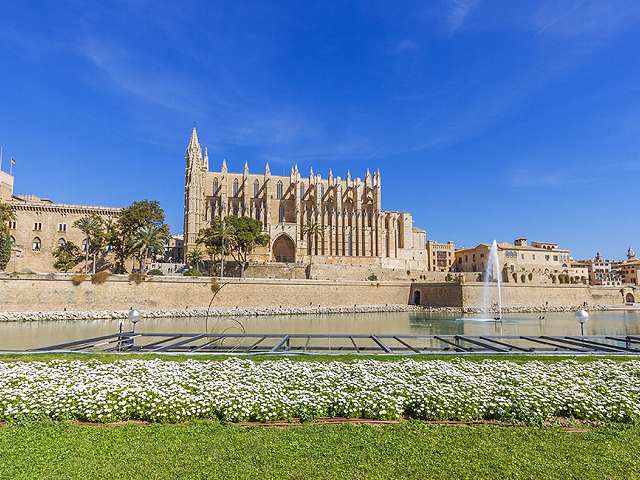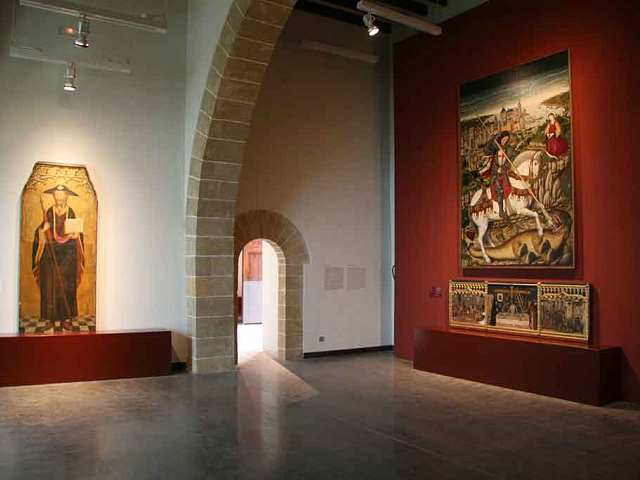Mallorca, like most Mediterranean countries, loves its winter feasts: bonfires on dark cold evenings, shared food and traditions that are part pagan, part religious.
The feast of St Antoni, which takes place on the seventeenth of January, encompasses all these traditionally Mallorcan elements.
Sant Antoni FestivalHistory of St Antoni
The Life of St Antoni, written down around 356 AD, tells the story of the rich young Egyptian who felt the call to a life of asceticism and went to live in the desert, where he underwent temptations and was tormented by demons. Antoni developed gifts of healing and pre-cognition and many miracles were attributed to him, both in his lifetime and after his death.
Sheep bells, piglets and wild winter nights
Following the miraculous healing of a nobleman’s son in eleventh century France, the Order of the Hospitallers of St Antoni was founded at La Motte, and this became a pilgrimage centre for those suffering from the disease of ergotism, known as St Antoni’s fire. The monks used to ride about ringing little bells to attract alms and these bells were then hung around the necks of animals to protect them from disease. The order’s pigs were allowed to roam freely, leading to bells and pigs becoming part of the iconography associated with St Antoni. In Mallorca, the tradition of hanging bells around the necks of animals has continued and wherever you go in the countryside today you will hear the sound of sheep bells in the fields.
Local tradition
On St Antoni’s day, in towns and villages all over the island, the local people take their animals to church to be blessed by the priests. Sheep, goats, donkeys, dogs, rabbits, goldfish in bowls – all are blessed in turn in a delightful ceremony that anyone is welcome to attend.
In towns and villages such as Sa Pobla, Artá and Muro, the blessing of animals is followed by a cavalcade of horses, donkeys and carts, and musicians playing the traditional instruments: the Xeremia (rather like the Scottish bag-pipes) flutes and drums. Some of the local people dress in traditional Mallorcan costume and folk dancing takes place in the squares.
Sant Antoni statue
The previous evening will have seen much wilder celebrations in Sa Pobla, where the local dimoni (demons) will have been out on a rampage, tormenting people with their pitchforks and frightening masks. Bonfires are lit in many of the streets and the traditional dish of eel pie eaten, along with the local botifarron or sobrasada (sausage) and jamon grilled over open fires. Artá too has its band of dimoni and as at Sa Pobla the participants will have prepared all year for the feast of St Antoni, working on the traditional costumes and acting out the parts they are to play.

Meanwhile, in the towns of Pollença and Port de Pollença, a different ceremony will be taking place: the climbing of the pine poles that will have been erected in the towns’ squares. The fir trees, cut down at a finca, are towed by boat into the port, before being hauled around town by the local young people. The climb itself looks to be a hazardous experience as each climber will be dragged down by a rival group as he attempts to reach the top. Eventually some one manages to get there, amidst wild cheers from his team and grasps the prize – a bag of feathers, tied to the top of the pole, a substitute for the chicken of earlier years. There are bonfires in Port de Pollença too on the eve of St Antoni and feasts of sausage and ham, cooked on open grills outside the restaurants in the square.
Antoni was a well-loved saint in the middle ages, regarded as a healer of both animals and men. Today his feast day is remembered with enjoyment by the people of Mallorca.
Share this article
Further reading
You may also be interested in these guides







